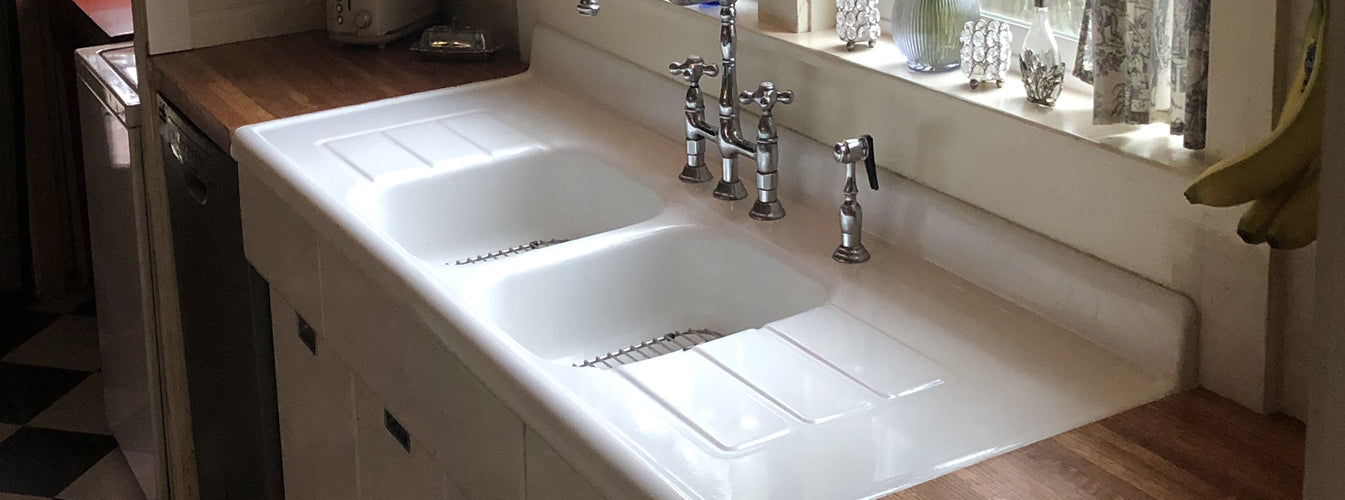Get [PRO] Pricing
Get [PRO] Pricing

Thinking about renovating your kitchen?
Choosing the right sink to fit the remodel can be a daunting task, but amidst the wide variety of kitchen sinks available today, none have stood the test of time quite like the cast iron sink.
 Long-lasting, durable, and easy to maintain, cast iron sinks have been around for a long time, and while they may have lost the top spot to stainless steel for a spell, they’re back and better than ever. These days, homeowners can get a cast iron sink in even more styles, colors, and configurations than ever before. But before you go rushing out to buy yourself a new one, let’s talk a bit about what cast iron is and why it may or may not be the best option.
Long-lasting, durable, and easy to maintain, cast iron sinks have been around for a long time, and while they may have lost the top spot to stainless steel for a spell, they’re back and better than ever. These days, homeowners can get a cast iron sink in even more styles, colors, and configurations than ever before. But before you go rushing out to buy yourself a new one, let’s talk a bit about what cast iron is and why it may or may not be the best option.
What is it?
 Cast iron is a heavy, brittle, but durable iron alloy that forms the foundation of the sink. Many are actually made from a high percentage of recycled or reclaimed iron, making it a reasonably good “green” option as far as kitchen sinks go. The surface coating on the sink is porcelain enamel, a hard, durable coating that protects the underlying cast iron and gives the sink its smooth, glossy surface.
Cast iron is a heavy, brittle, but durable iron alloy that forms the foundation of the sink. Many are actually made from a high percentage of recycled or reclaimed iron, making it a reasonably good “green” option as far as kitchen sinks go. The surface coating on the sink is porcelain enamel, a hard, durable coating that protects the underlying cast iron and gives the sink its smooth, glossy surface.
Pros
Durable – Cast iron isn’t going to crack or dent like a solid surface or stainless steel sink.
Attractive – The porcelain enamel coating provides a glossy finish that adds a beautiful visual appeal.
DIY-Friendly – A self rimming (drop-in) cast iron sink is easy to install and doesn’t require extra devices to hold it in place.
Low Maintenance – The porcelain surface is non-porous and smooth making it resistant to staining and easy to keep clean.
Cons
 Heavy – A cast iron undermount kitchen sink requires solid support because of its weight.
Heavy – A cast iron undermount kitchen sink requires solid support because of its weight.
Brittle – The enamel can chip or scratch if it’s knocked hard enough, and any exposed cast iron is susceptible to rust.
Sensitive – Improper care can lead to staining and damage to the porcelain finish of cast iron over time. The abrasiveness of typical kitchen cleaners can cause scratches and wear. Proper maintenance is crucial.
Installation: Drop-in cast iron sinks are DIY-friendly, but may require more caulk to seal the gaps between the countertop and the sink. A drop-in cast iron sink installation will cost less than an undermount cast iron sink installation, which is more labor-intensive.